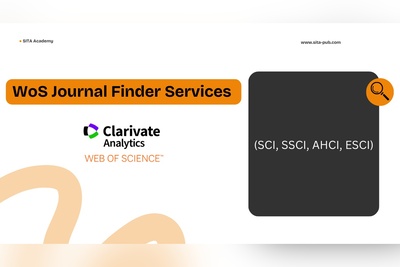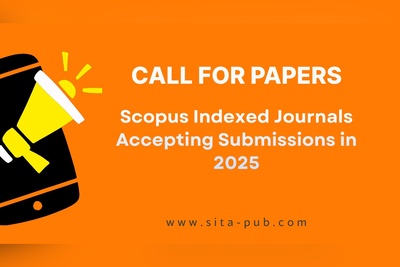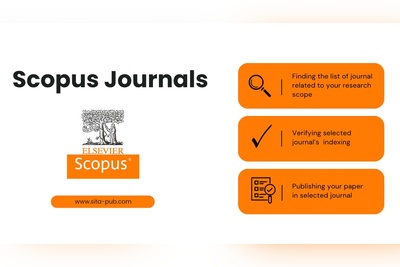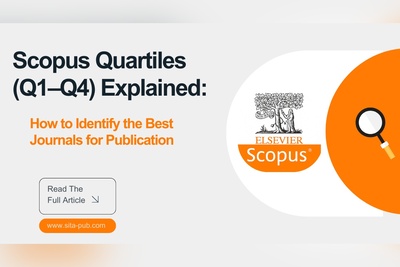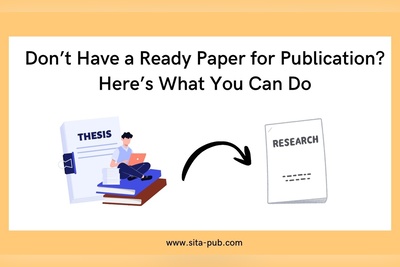Thesis to Article: How to Write a Paper That Journals Will Accept
Turn your Master’s or PhD thesis into publishable journal articles. Learn step-by-step how to condense, restructure, and submit your research to Scopus, Web of Science, PubMed, and other international journals.
- Why Convert Your Thesis into a Journal Article?
- Thesis/Dissertation vs Journal Article: Key Differences
- How to Turn Years of Research into Published Work Without Starting from Scratch
- The Process of Converting a Thesis into a Journal Article at SITA Academy
- Benefits of Using SITA Academy’s Thesis-to-Article Service
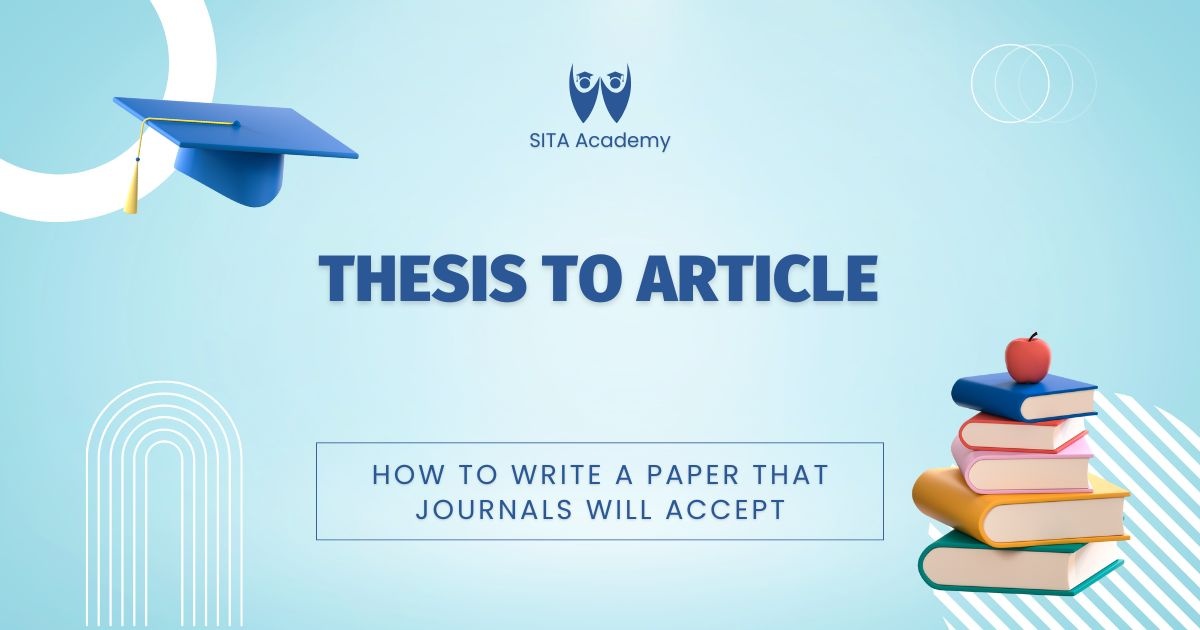
Many graduate students aspire to publish their Master’s thesis or PhD dissertation in reputable scientific journals, such as those indexed in Scopus, Web of Science (SCI, SCIE, AHCI, ESCI), and PubMed. Publishing your research not only strengthens your academic record but also plays a crucial role in postdoctoral applications, academic promotions, and gaining international recognition in your field.
However, most students are unsure how to convert a thesis or dissertation into a publishable journal article. This guide provides a clear, step-by-step roadmap to help you turn years of research into a concise, high-quality journal article.
Why Convert Your Thesis into a Journal Article?
Your thesis or dissertation is a detailed document, often hundreds of pages long, representing years of research, experimentation, and analysis. While it’s perfect for academic evaluation, journals require a different format, language, and focus. Converting your thesis into a journal article ensures that:
Your work reaches a broader scientific audience.
Your research can be formally cited and recognized.
You build a strong academic publication record.
You avoid wasting valuable research by leaving it unpublished.

Thesis/Dissertation vs Journal Article: Key Differences
Understanding the differences between a thesis and a journal article is the first step toward effective conversion. The table below summarizes the main distinctions:
Feature | Thesis / Dissertation | Journal Article |
Purpose | Demonstrate comprehensive research skills, satisfy degree requirements | Communicate key findings concisely to the scientific community |
Structure | Chapters: Introduction, Literature Review, Methods, Results, Discussion, Conclusion | Sections: Abstract, Introduction, Methods, Results, Discussion, Conclusion |
Word Count | 50–300 pages depending on degree | 3,000–8,000 words depending on journal |
Language | Academic but often verbose; may be in native language | Concise, precise, formal academic English |
Publication Venue | University repository, thesis database | Indexed scientific journals (Scopus, Web of Science, PubMed, etc.) |
Audience | Thesis committee, examiners | Researchers, academics, and the broader scientific community |
As you can see, a thesis is comprehensive but often too detailed for journals, which favor concise, focused, and well-structured articles.
How to Turn Years of Research into Published Work Without Starting from Scratch
Converting a thesis into a journal article might seem overwhelming, but it is entirely achievable with a structured approach. Here are the steps you should follow:
Step 1: Prepare Your Thesis
Collect all thesis files, including figures, tables, and appendices.
If your thesis is not in English (for example, Arabic, French, Spanish, Russian, or other languages), translate it into formal academic English.
Highlight the sections containing key findings and original contributions that will form the core of your article.
Step 2: Understand Journal Requirements
Decide which journals you want to target based on your field and research focus.
Check their word limits, formatting styles, and structure requirements.
Consider indexing preferences (Scopus, Web of Science, PubMed) to maximize visibility and recognition.
Step 3: Condense and Restructure
Remove non-essential sections such as lengthy literature reviews or extensive appendices.
Condense redundant information to maintain clarity and focus on the research’s contribution.
Focus on core findings, key results, and significant insights from your thesis.
Step 4: Follow the Standard Research Paper Structure
A typical journal article is structured as follows:
Abstract
Provide a concise summary (150–250 words) of your research objectives, methods, main findings, and significance.
Make it clear, engaging, and focused on results.
Introduction
Present the research problem and objectives.
Highlight the gap in knowledge your research addresses.
Draw briefly from your thesis introduction but keep it concise.
Methods
Summarize the methodology; include key procedures and reproducibility details.
Avoid excessive technical detail unless necessary for replication.
Results
Focus on the main findings.
Use tables, figures, and graphs efficiently.
Remove redundant or minor results that are not critical to the paper’s message.
Discussion
Interpret your findings, relate them to existing literature, and highlight their novelty.
Limit the discussion to significant points relevant to your journal’s audience.
Conclusion
Summarize the main contributions and implications.
Keep it brief and impactful.
References
Follow the target journal’s citation and formatting style.
Step 5: Review, Edit, and Polish
Ensure your language is concise, clear, and professional.
Verify the logical flow and coherence of sections.
Adapt figures, tables, and references according to the journal’s guidelines.
Consider peer review or expert editing before submission to increase acceptance chances.
The Process of Converting a Thesis into a Journal Article at SITA Academy
We simplify the process for graduate students and researchers. Here’s how it works:
Share Your Thesis
Send us your Master’s or PhD thesis via email or our upload channels.
Thesis Review
Our expert team reviews the thesis carefully to determine how many papers can be extracted and what titles are suitable.
Proposal and Approval
We share our recommendations with you, including titles, potential papers, and target journals.
You approve which papers to proceed with.
Conversion to Journal Article
We condense, restructure, and translate your thesis sections into standard research papers.
Each paper is tailored to meet the target journal’s requirements.
Journal Suggestions
For each extracted paper, we provide a list of specialized journals with high acceptance rates in your field.
Benefits of Using SITA Academy’s Thesis-to-Article Service
Maximize Your Thesis: Extract multiple papers from a single thesis.
Full Conversion and Translation: We handle all language translation and formatting.
Journal Recommendations: Each paper is matched with journals suitable for its topic and impact.
Expert Guidance: Our team supports you through every step of the process.
Do you want to publish your Master’s or PhD thesis in international journals like Scopus, Web of Science, or PubMed?
We provide comprehensive assistance to turn your thesis—whether in Arabic, French, Russian, Spanish, or any language—into a journal-ready research paper.
Send your thesis today via the channels below, and our experts will help you:
Extract publishable articles from your thesis.
Recommend suitable journals for each paper.
Convert, edit, and polish each paper to meet journal standards.
Don’t let years of research sit idle—turn your thesis into internationally recognized publications with SITA Academy.
Verified Contact Channels
If you have any questions, inquiries, or would like to learn more about our services, please don't hesitate to reach out to us. Our dedicated team is ready to assist you.





